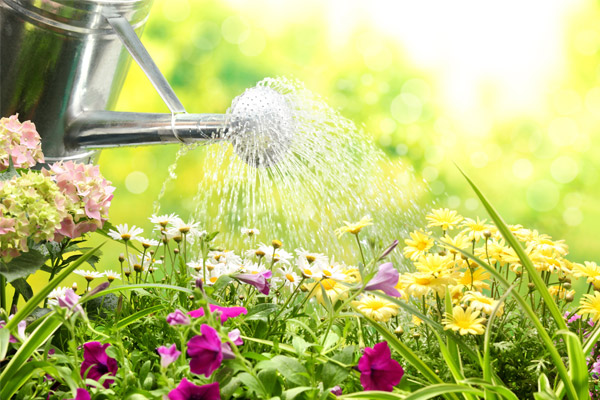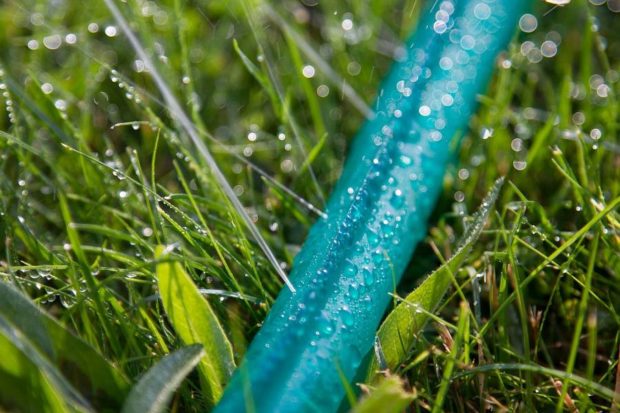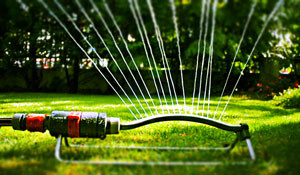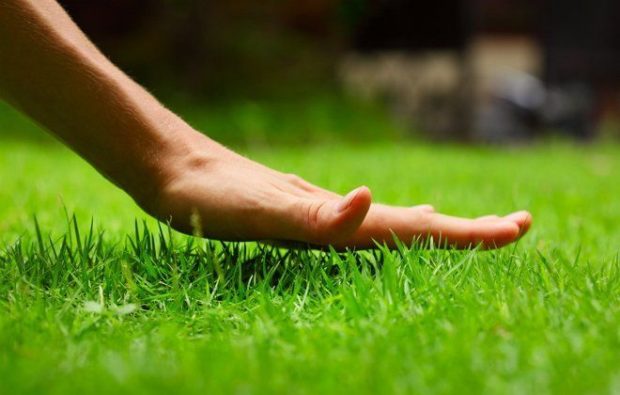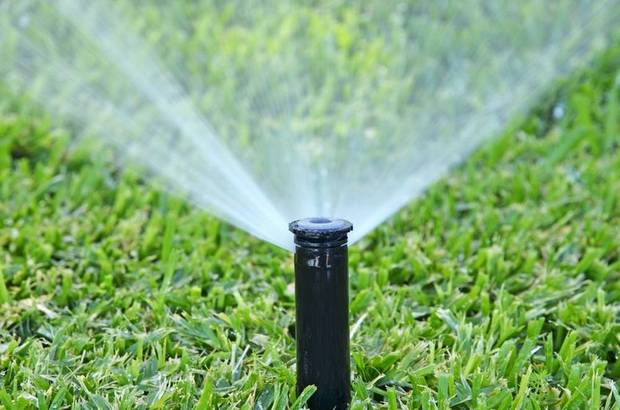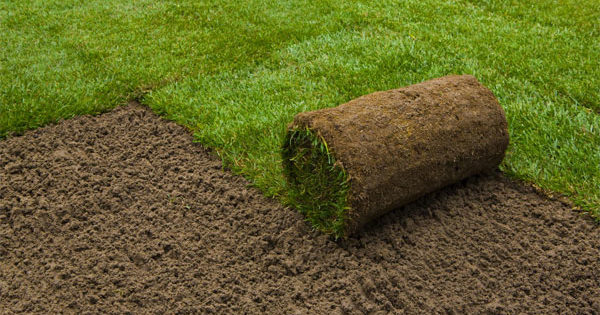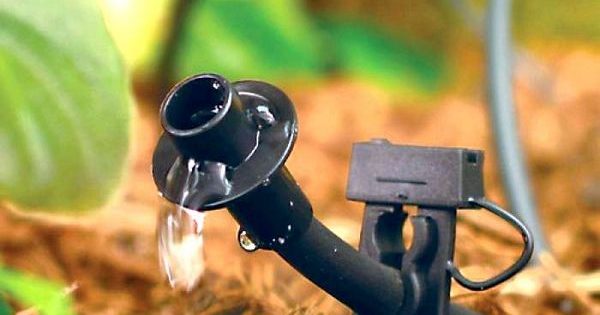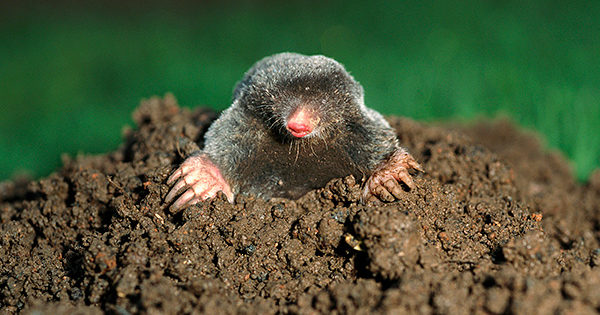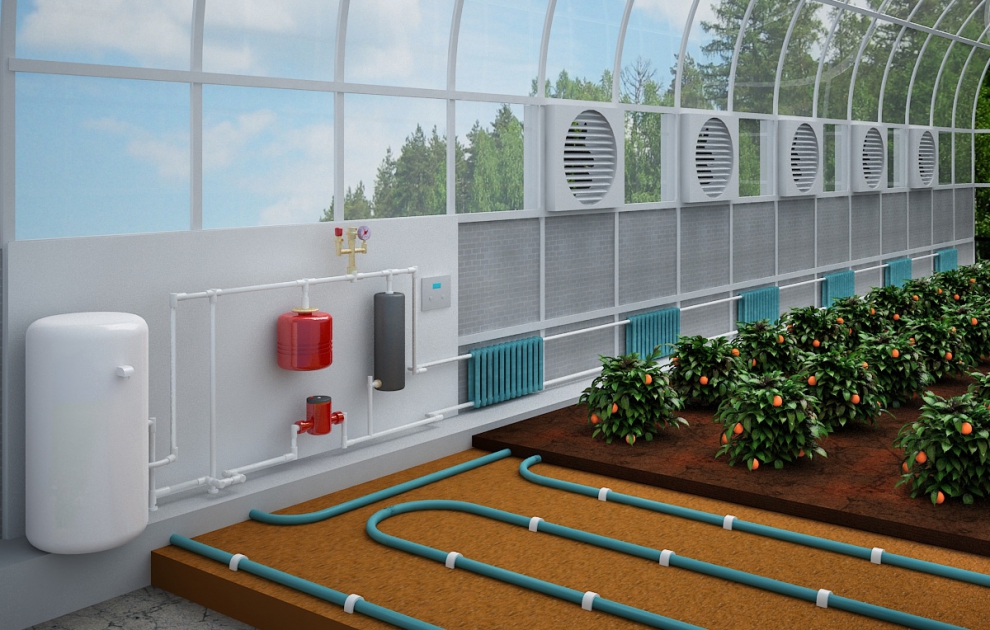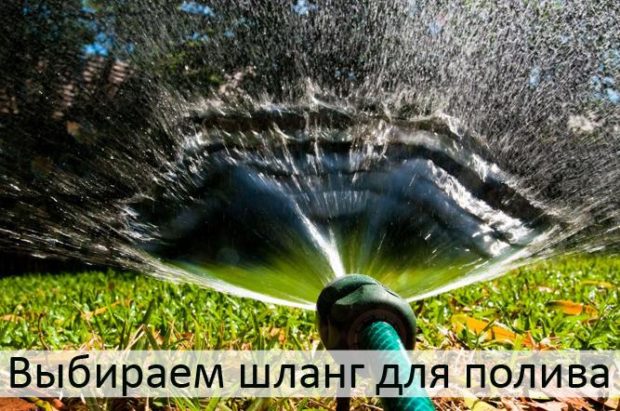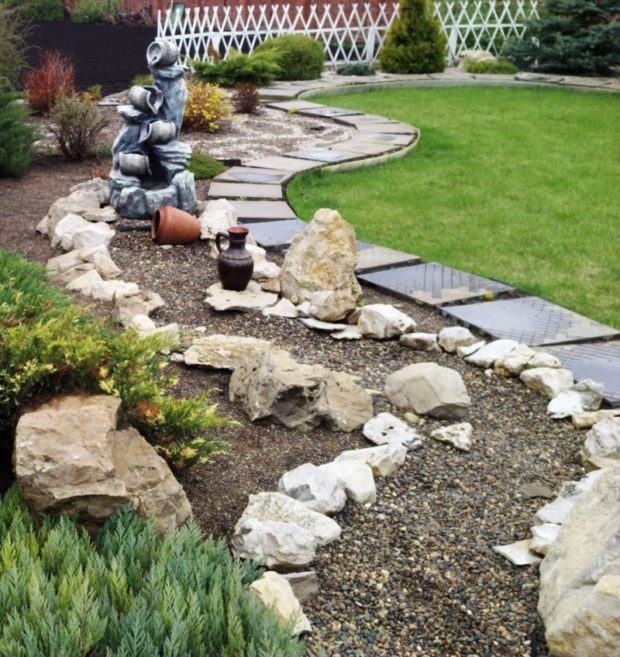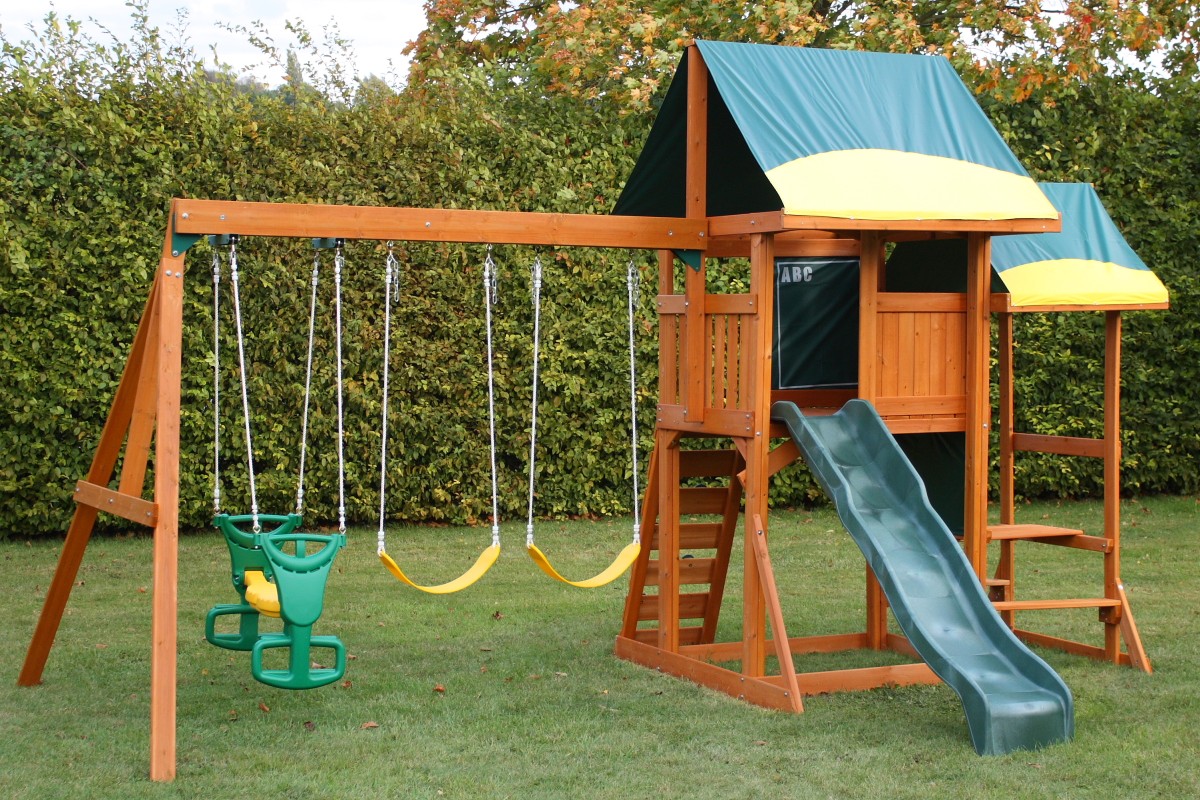6 tips for watering the lawn: equipment, frequency, norms
Well-groomed, luxurious lawn can rightfully be considered a real decoration of any country or garden plot. A lot of effort will be required for independent lawn arrangements, but even more attention will be required in the first years of his life. This includes timely cleaning, and shearing, sowing seeds, proper top dressing and fertilizing the soil, and most importantly - timely and sufficient watering. How to water the lawnright, what watering equipment will be able to provide plentiful, but delicate watering, which is preferredfrequency watering and what average norms recommended for lawns? You will find answers to all your questions after reading this article.

1. How to determine that a lawn needs watering?
Many mistakenly They believe that regular lawn moistening is required only after its initial sowing and before the first shoots appear, and then Mother Nature herself takes care of everything. After all, for example, the forest is full of green lawns, which no one cares for, but they look fresh and very lively. Indeed, grasses in their natural habitat are much more stable than on an artificially planted lawn. This happens because in the wild all grass has a large height and long leaves and stems that help to accumulate moisture and increase its reserves, thereby deepening the root system. The longer the roots, the more moisture they can extract from the earth.
The lawn is regularly mowed, and the height of its stands barely reaches 10-15 cm. the main problem - a shallow, superficial root system, which lies at a depth of 10-15 cm and is very susceptible to drought. It is not at all difficult to determine the moment when the water reserves are completely exhausted and it is necessary to replenish its losses.
Of course, the easiest way is to stick a stick into the ground. If it easily enters a depth of about 15 cm, then the moisture supply in the soil is still sufficient. But you will not resort to a similar method every time.
We offer to carefully examine your lawn, If you notice the following symptoms, then it's time to water:
- The grass has acquired an unhealthy bluish or grayish tint;
- In places where the sun constantly shines, the grass has become paler than in other places;
- There were bald spots;
- The stems began to curl;
- After you walked around the lawn or rode a lawn mower, the grass could not quickly restore shape in a short period;
- General withering of the green cover.

When the moment is completely missed - you did not attach importance to the color change, or you simply were not there - the grass turns yellow and fades. Drought-resistant herbs can be saved even after they have completely withered. After abundant watering, they are able to recover. But the appearance of the lawn for a long time will not bring aesthetic pleasure from its contemplation.
2. When is it best to water?
One of important factors determining the effectiveness of water procedures - the time at which they are performed. Consider all possible options with their advantages and disadvantages:
- Morning watering considered the most optimal.In the early morning night coolness still persists, therefore, the coefficient of moisture evaporation from the earth's surface will be minimal. Thanks to this, the water will reach the desired depth and qualitatively moisturize the soil. In the morning, almost always calm, calm weather. This contributes to the fact that the water spray does not blow in different directions, and they get exactly where they were intended. The sun is not yet so "evil" as during the day, so moisture from the surface of the soil and plants will have time to evaporate and absorb before the onset of heat. Summarize - the best time to water is between 8 and 9 a.m..
- Day watering - the most harmful and ineffective. Watering the lawn under scorching rays, you will only achieve the following: drops of water on the surface of plants will serve as original lenses that will attract sunlight and form burns. Due to the difference in high ambient temperature and lower soil and water temperatures, plants will experience real stress. After all, watering with cold, or, conversely, too hot water, can significantly slow down growth. Plus, the degree of evaporation during the day will be the highest. You will need twice as much water to properly moisten the site than would be required in the morning or evening. And if in the afternoon a little breeze rises, then in addition to the lawn, you will also pour paths and other nearby objects. And this in turn will further increase water consumption.

- Evening watering It will only benefit if the air temperature drops slightly at night compared to lunchtime. For example, if during the day the thermometer reaches + 40 ° С, and at night it drops to + 30 ° С, then you can safely water it. The soil will be warm and quickly absorb moisture to the required depth. If the night temperature is + 10-15 ° C, then excess moisture from the surface of the soil and plants will not be able to absorb quickly. Its accumulation will serve as the beginning of the formation of mold and pathogenic fungi. Thus, your lawn will get sick around the perimeter. Optimal evening time for watering - between 16 and 18 hours. Before the sun goes down, the grass has time to dry.
- Morning + evening watering it is carried out only on particularly hot and dry summer evenings, provided that during the daytime the topsoil has time to completely dry to a depth of about 10 cm.If the soil remains moist and you re-water in the evening, you will achieve a gradual swamping of the site. Oxygen will not flow to the root system, which will lead to its weakening.
3. Norms of water consumption by herbaceous plants
It is very important to understand the line between abundant watering and overflow, and also in no case to allow underfilling. Many argue that it is better to water the lawn more often, but for less time. This judgment is fundamentally wrong and won't bring absolutely no good. On the contrary, the evaporation rate will be very high, the grass will get wet only superficially, and the soil will not have time to soak to the very roots. Such short-term showers can only be used to refresh the site and reduce the ambient temperature. Therefore, it is better to water the lawn once, but in sufficient quantity. It is almost impossible to calculate a clear norm of water consumption by a particular site. We can only generalize and say that 1 m2 land needs 15-20 liters of water.  This indicator directly depends on the mechanical soil composition on your site:
This indicator directly depends on the mechanical soil composition on your site:
- Light sandy soils they quickly pass through any amount of moisture and are not able to hold and accumulate it in sufficient quantities. The reason for this is their increased friability. Such soils require more water, and the norms in this case are up to 35 liters per square meter. But such a soil is very difficult to overfill. Water can go quite deep without harm to the horse system of plants.
- Clay soil heavier and denser, they retain moisture well and can nourish plants much longer. Such a lawn can be watered much less frequently and water consumption rates will be much lower. When watering a lawn with this kind of soil, make sure that no puddles form on the surface. Water can stagnate for quite some time, especially if the soil has already been saturated and is no longer able to absorb water. A shallow root system may rot. After the excess moisture dries, the top layer of the earth becomes denser, and a hard crust forms, which will impede the flow of oxygen to the roots. As soon as the lawn stops "breathing", the grass will begin to wither. In this case, you need to quickly fluff up the topsoil.

Recommended Rate water is often determined by the depth of the root system and is optional. You should not strictly adhere to it, if you know that the roots of your lawn have gone deep into 25, or even 30 cm. In this case, it is necessary to increase the amount of water so that the moisture reaches the deepest roots. Just be guided that 35-50 liters per square meter moisten the soil to a depth of 10 cm.
And now let's move on to the answer to a logical question, which probably has already appeared in your head - and as actually determine how many liters water is necessary pour it on your site so that it is saturated with moisture to a depth of 10 cm. To do this is very simple:
- Starting the next watering, take a watch or a timer and a ruler with you;
- At different ends and in the middle of the plot, place an empty glass jar on the ground;
- Open the water and at the same time, or turn on the timer;
- Observe the water level in the banks. When it reaches 1.3 cm, it can be argued that the lawn received about 10-15 liters of water per square. With a mark of 2.5 cm - about 20-25 liters. For a more accurate determination of the amount of fluid, but at the same time in order to understand how evenly irrigation occurs, measure the water level in all banks, add and divide by their number.
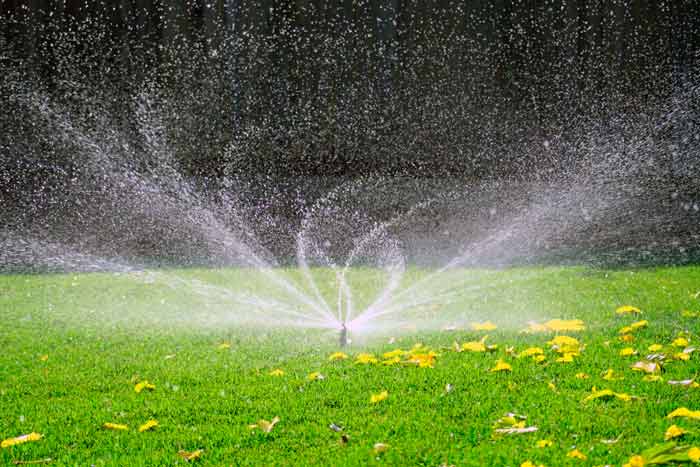
For convenience, you can pre-apply a marker on the wall of the can with a marker, the height of which will be the coveted 10 cm. When the liquid reaches the set height, turn off the timer. Now you know for sure not only the amount of water necessary for high-quality watering of your lawn, but also the time during which it should be carried out. Next time, banks are no longer needed.
4. How often do you need to water the lawn?
When and for how long it is best to water the lawn, you already know. Now it's time to decide on the frequency of watering. She depends on many factors:
- The mechanical composition of the soil;
- Depths of the root system;
- Weather conditions;
- Landscaping features.
We have already talked about various norms of water consumption in sandy or clay soils. The former need to be much more abundant and more often moisturized. The deeper the root system is located, the longer, but less often should be watering. If your site has inclined sections or completely located on a slope, the level of water absorption at different points will be uneven. In order to prevent overflows in one place and obvious underfilling in another, such lawns recommend watering method 15 through 5. Where 15 is the watering time, in minutes. And 5 is the absorption time, also in minutes. At such intervals, you can achieve the best result. Most summer residents think that if their lawn to be in shady area then it should be watered much less frequently. The determining factor in this case is the object that creates the shadow. If this is a shadow from a house or other building, then in part they are right. If the lawn is in the shade of trees or tall bushes, then it requires even more frequent watering than that located in an open area under the scorching sun.This is due to the fact that the root system of large plants attracts moisture and nutrients much stronger and more intensively. And the thin root system of cereal plants barely manages to get the necessary minimum.
Most summer residents think that if their lawn to be in shady area then it should be watered much less frequently. The determining factor in this case is the object that creates the shadow. If this is a shadow from a house or other building, then in part they are right. If the lawn is in the shade of trees or tall bushes, then it requires even more frequent watering than that located in an open area under the scorching sun.This is due to the fact that the root system of large plants attracts moisture and nutrients much stronger and more intensively. And the thin root system of cereal plants barely manages to get the necessary minimum.
Also plays an important role and climate of the region where you live. If the daytime temperature is not too high, and heavy rainfall periodically occurs, then just one watering a week is enough. If the rainfall is irregular, and during the day is hot enough, water the lawn 2-3 times a week. Just try to stick golden mean - watering when the top layer is completely dry to a depth of 10 cm. Indeed, it can rain for two weeks, and then a little drought will begin, and it will be difficult to navigate the weather.
5. Equipment for watering the lawn
To watering does not take much time and effort, and most importantly, was economical and appropriate, you must choose a watering system that will match the size and shape of your lawn. Let's start with the simplest ways:
- Watering with manual watering can. Despite all the modern technologies and devices that can make the irrigation process completely automated, it is a pleasure to many to do watering with their own hands. It is reasonable to do this only on small lawns, otherwise it will be too long and tiring. Be sure to choose watering cans with frequent, but small in diameter holes. Then the water jets will be thin and will not wash away the delicate roots. Also, a garden watering can be useful for watering hard-to-reach areas or where local watering is needed.

- Watering with garden hoses - one of the simplest and most affordable methods of irrigation of lawns. In order to make watering more gentle and to prevent even short-term moistening with a jet with a strong pressure, as sometimes happens when pinching the edge of the hose with your finger, use special diffusion nozzles. Inconvenience This method of watering is that the hose must always be carried along and not skimp on its length. Thus, you can water areas of any size and shape.
- For irrigation of long and narrow green stripes are best suited perforated hoses. Due to the fact that many small holes are located along their entire length, water is evenly sprayed in all directions, which ensures cooling of the subsoil space and gentle watering.

- Watering the lawn using various sprinklers. These are special nozzles, which can be both stationary and mobile, which imitate natural rain watering. It is believed that this is the most optimal irrigation method for lawns. Especially, given the fact that you can choose the best type of sprinkler for various areas and even site shapes. So, for example, there are circular sprinklers suitable for irrigation small plots. Rotating sprinklers are suitable for irrigation of round and oval lawns. You can adjust the range and pressure intensity and avoid unwanted watering of unnecessary territories. For irrigation of rectangular or square plots, there is a floating, or oscillating sprinkler. Its nozzle smoothly sways in one direction or the other. By setting the necessary settings, you can adjust the length of the water jets. Big advantage sprinklers is that the water disperses and turns into very small sprays, which before reaching the ground and grass manage to warm up to ambient temperature. The risk of causing stress in plants is minimal. Disadvantage of such systems is that when a strong wind blows a certain amount of water, and for high-quality irrigation requires a greater amount. Also, with such irrigation, a very high evaporation rate.

- Drip system watering the lawn is also very effective and allows you to moisten the soil even in the daytime without harm to plants. Water at the same time goes directly to the roots. All over the site drip hoses are laid, which brings some inconvenience while mowing the lawn. After all, the hoses will have to be twisted and untwisted each time.
- Intrasoil irrigation system has a minimum evaporation rate. It is a system of pipes or hoses laid underground under the entire site. On the walls of the pipes there are micro-holes that supply water to the roots. Due to the special structure of the hoses, which are labyrinths for the passage and accumulation of fluid, the holes are rarely blocked even with moist soil. The only “but” - you should think about such an irrigation system before arranging and preparing a place for a lawn.
- Automatic The irrigation system also consists of piping underground. In certain places, the pipes come to the surface, and various nozzles are attached to them, including sprinklers that disperse water. Choosing a similar irrigation system, think that mowing the lawn will be much more convenient if the sprinklers are recessed. It is also necessary to equip an automatic system in advance. For greater convenience, it can be equipped with a sensor that detects soil moisture, a precipitation sensor and a timer. This will allow the system to turn on only when necessary or at a specific time. To maintain a healthy lawn, your presence in this case is optional.
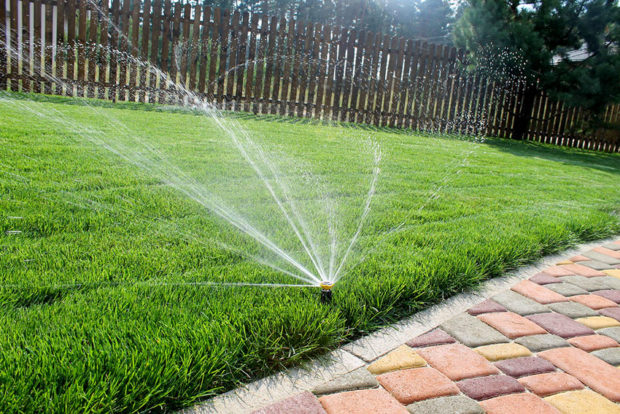
One more question - where to get water for watering. In order to save money, many install special sedimentation tanks on the sites, which serve to collect rainwater. They can embed work with a ball valve and an adapter for a specific hose diameter. Another way to save money is to take water from a natural reservoir - a lake or a river. To do this, you need a special submersible pump that can provide the necessary pressure. Well or the well will also have to be equipped with a pump. But pouring such cold water directly from the source is not recommended. It is better to grind it in a container and wait until it reaches temperature or use spray nozzles. Then the temperature difference will not be felt. Well, the easiest way is to draw water from a central water supply.
6. How to protect the lawn from drought?
There are especially dry months when any plants need more water. But it happens that there is no way to make an automatic irrigation system on your site, just as there is no way to come every day to irrigate. In such situations, there are several tips to help the lawn cope with drought without watering:
- You need to regularly remove weeds. This will allow grass to grow continuously and without obstacles and reduce water consumption. Weeds, by the way, absorb moisture in a much larger amount than cereals.
- Together with the timely removal of unwanted plants, feed the lawn with fertilizer seasonally. Then the soil will be rich in trace elements and fertile.
- Do not cut the lawn as often and as short as usual. Let the grass grow much higher than usual. Thus, it will create a shadow on its own, and the surface layer of the soil will dry more slowly.
- Mowed grass can be left directly on the lawn. It will help retain moisture in the soil.

Thus, the lawn can last without watering for up to two weeks. However, this is not always recommended.
To increase stability plot to drought you need to take care of strengthening the root system. To do this, in the autumn regularly pierce the sod with a pitchfork - this will not allow the soil to condense and become impassable for water and oxygen. You can fill the lawn with mulch. These simple guidelines will keep your lawn in its best condition and prevent it from drying out.


